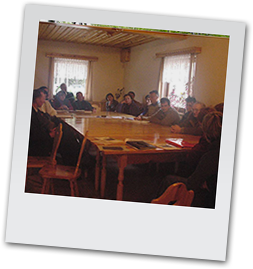OUR CASE OF SIMONA: Understanding stakeholders by open talks and focus groups paves the road for co-operation
Simona saw the unique opportunity to take a first decisive step: the visitors of the 1st of May celebrations stop damaging the Natura 2000 site where the rare and beautiful Pulsatilla Grandis blooms.

Listening and two-way communication results in understanding
Simona went out and talked with the stakeholders. One by one she visited them. She went to the local pub and had open conversations. She sat down at kitchen tables and in offices. She asked questions: What does Boč mean to you? What do you think of the 1st of May festivities? What do you like and what do you dislike about the festival?
She found out: they all love the mountain and its meadows; they all love to spend their 1st of May festivities there; they all were dissatisfied with the way the festivities developed over the years: more noise, more bikes, more chaos, more drinking, less fun to enjoy nature for families with children.
Now, Simona understood the views and attitudes of her stakeholders. Next she invited them to discuss the goal and solutions. Her new message was: ‘We all love our mountain meadows. We are proud of our rare and beautiful flowers. Let’s explore how we can make the next 1st of May celebration a feast for people and nature. Join our round tables to discuss how to make that happen’.
For the first time in years, they met in a positive way. Everybody helped to answer the question: how can we reach our goal together? How can we all win?
Understanding the stakeholders is the first step towards partnership and support. Now, Simona can work together with them to reach her goal! And more importantly, her goal is now also their goal. The stakeholders stopped accusing each other. They took the first step to be a team working on a shared goal. Well done, Simona!


